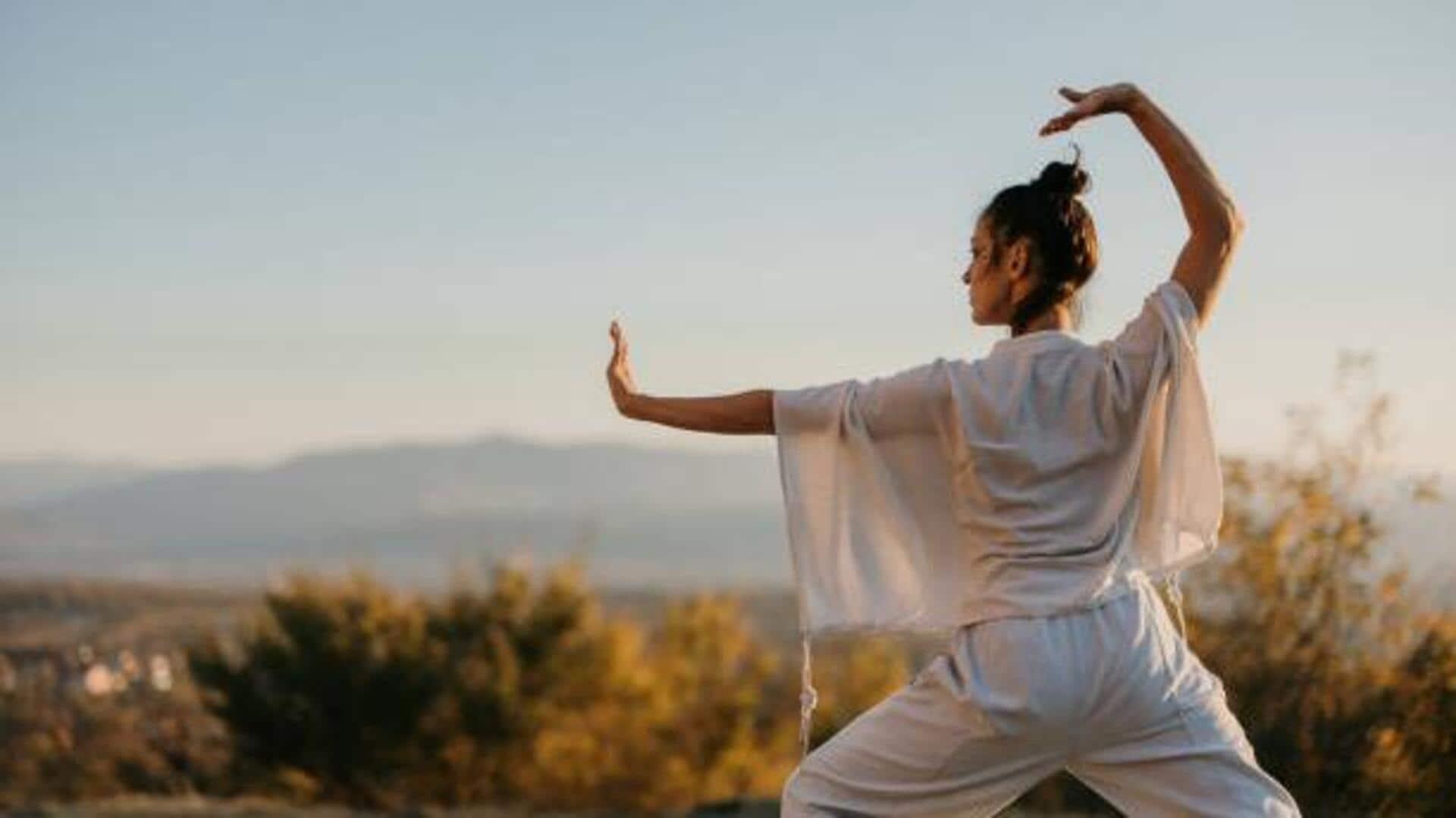
A beginner's guide to Tai Chi
What's the story
Tai Chi, an ancient Chinese martial art, is famous for its slow, deliberate movements and focus on breathing. It is said to improve balance, flexibility, and mental well-being. For beginners, starting with simple moves can make the practice more accessible and enjoyable. Here are five Tai Chi moves that beginners can easily learn to enhance their wellness journey.
Move 1
Cloud hands
Cloud hands is a flowing movement that emphasizes relaxation and fluidity. Start by standing with feet shoulder-width apart. Shift your weight to one foot while gently moving your hands in a circular motion in front of you, like clouds drifting across the sky. This move helps improve coordination and calm the mind.
Move 2
Parting the horse's mane
Parting the horse's mane is a fundamental Tai Chi move that promotes balance and strength. Begin by standing with feet together. Step forward with one foot as you extend both arms forward as if parting a horse's mane. This movement enhances leg strength and encourages mindfulness through controlled motion.
Move 3
Grasping the bird's tail
Grasping the bird's tail is a series of four movements that focus on yielding energy and maintaining balance. Start by standing in a neutral position, then shift your weight from side to side while performing gentle pushing and pulling actions with your hands. This sequence improves posture and teaches you how to respond to external forces.
Move 4
Wave hands like clouds
Wave hands like clouds is a continuous movement that promotes relaxation and mental clarity. Stand with feet shoulder-width apart, then shift your weight from one side to another as you move your hands in soft waves, mimicking clouds floating through the sky. This exercise helps reduce stress levels by encouraging deep breathing.
Move 5
Single whip
Single whip combines stretching with strengthening exercises for arms and legs alike. Stand firmly on both feet before extending one arm outwards while turning slightly at the waist. Then pull back inwardly, creating tension across muscles used during this action sequence. Practicing regularly can increase overall flexibility, as well as improve circulation throughout the body systems involved therein.